“
Strengthening the Spleen and Eliminating Dampness

Recently, the weather has been hot and humid, alternating between sweltering heat and torrential rain. Such conditions can be exhausting and lead to poor appetite, especially for those with a weak spleen and stomach or a damp-heat constitution. In these cases, Fu Ling (Poria) soup can be beneficial.
In Guangdong, housewives often add Fu Ling to their soups, using both the angular pieces of Fu Ling and the rolled Fu Ling strips. Fu Ling is well-known for its ability to transform dampness and strengthen the spleen, making it a staple in daily health maintenance.
In fact, Fu Ling not only strengthens the spleen and eliminates dampness but also has calming and sleep-promoting effects. Below, we will provide a detailed introduction to this medicinal herb.
1
Fu Ling
Fu Ling is classified as a superior medicine in the Shen Nong’s Herbal Classic.
Fu Ling is also known as Fu Ling, Fu Tu, Song Yu, and Bu Si Mian, with the root bearer referred to as Fu Shen. Li Shizhen noted that Fu Ling is referred to as Fu Ling in the Records of the Grand Historian. It is said to be formed from the spirit of the pine tree, which condenses and settles, hence the names Fu Ling and Fu Shen. It is found beneath the pine and above the Mi Si, thus also called Fu Tu. Some say it is named for its resemblance to a rabbit.
A famous Tang poem states, “Under the green pines, Fu Ling is abundant.” Fu Ling is a fungus that grows on the roots of pine trees. Ancient people believed that when a pine tree is cut down, the pure qi stored in its roots cannot rise, similar to a spring being blocked. The “spring water” that cannot rise must find a way out, thus condensing into Fu Ling. Because it originates from pure qi, Fu Ling has no fishy taste, instead having a mild flavor akin to clear porridge, hence its role in “raising the clear and lowering the turbid.” This means that Fu Ling can elevate the clean parts of the body’s fluids while promoting the discharge of turbid “waste water.”
The Compendium of Materia Medica states that Fu Ling comes in red and white varieties, with the larger ones resembling three to four sheng containers, having a black, finely wrinkled outer skin and a firm white interior. Those shaped like birds, beasts, turtles, or tortoises are considered good, while the hollow red ones are not. It is said to be impervious to decay; even after being buried for thirty years, its color and texture remain unchanged.
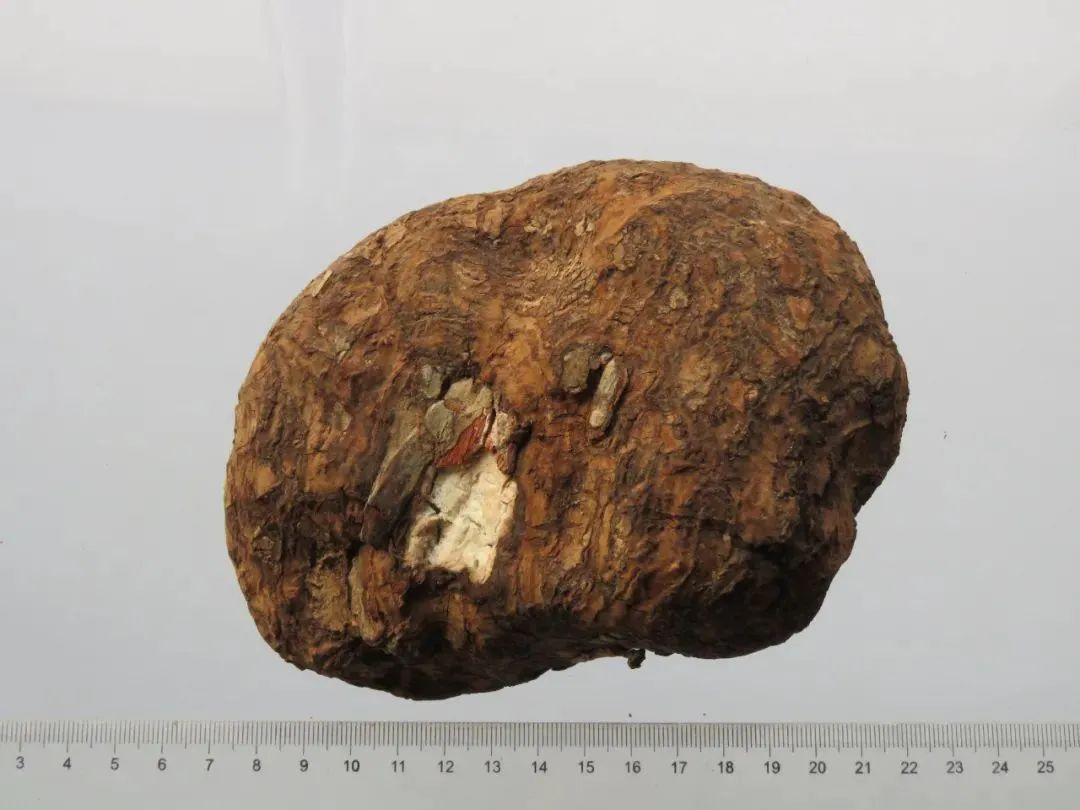
▲ Fu Ling pieces
Ancient people referred to Fu Ling as a “four-season divine medicine” due to its broad efficacy and suitability for all seasons. It can be combined with various medicines to address ailments such as cold, damp, wind, and warmth, showcasing its unique effects.
The 2020 edition of the Chinese Pharmacopoeia records: Fu Ling, with a sweet and bland taste, is neutral in nature; it enters the heart, lung, spleen, and kidney meridians; it has effects of promoting urination, eliminating dampness, strengthening the spleen, and calming the mind. It is commonly used to treat edema, reduced urination, phlegm, dizziness, spleen deficiency, poor appetite, diarrhea, and insomnia.
Modern research shows that Fu Ling contains various nutrients, including polysaccharides, triterpenes, ergosterol, phosphatidylcholine, choline, and histidine. Fu Ling has pharmacological effects such as immune regulation, anti-tumor, and anti-aging, making it an excellent choice for longevity, cognitive enhancement, and anti-aging.
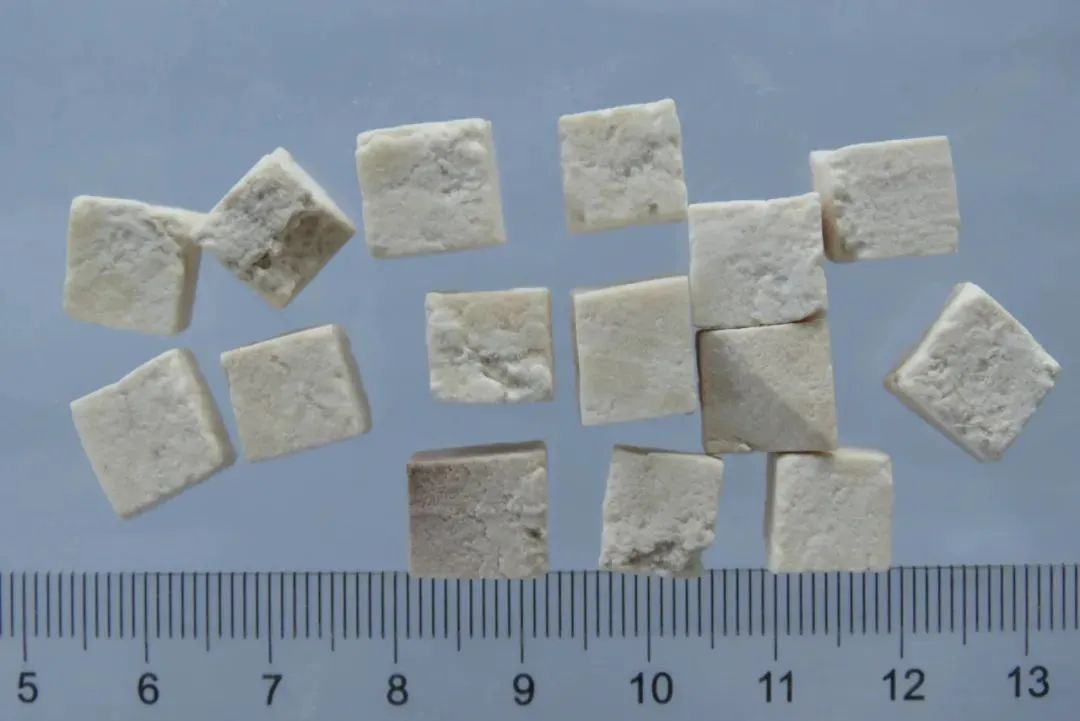
▲ Fu Ling cubes
2
White Fu Ling, Fu Shen, and Red Fu Ling
The white part of the Fu Ling fungus is known as Fu Ling, also called white Fu Ling, while the part that clings to the pine root is called Fu Shen, and the light red inner part is referred to as red Fu Ling. Traditionally, it is believed that Fu Shen and Fu Ling have similar effects, but Fu Shen is better for calming the mind, while red Fu Ling is more effective for eliminating damp-heat, treating short and red urination, or difficult urination.
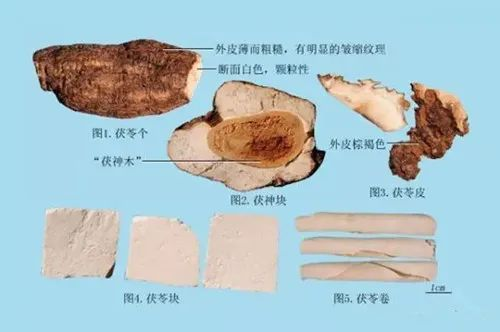
The Commentary on Materia Medica states: the white variety enters the qi aspect, while the red variety enters the blood aspect, benefiting the heart and strengthening the spleen, with white being superior to red; the red variety is better for unblocking the small intestine and eliminating damp-heat, while red is also superior to white. Fu Shen grows on the heartwood, distinguishing it from Fu Ling.
The Discussion on Medicinal Properties states: Fu Shen is sweet and non-toxic. It is used for treating fright, calming the mind, replenishing energy, and alleviating urgent pain and fullness in the heart area, especially when the individual is weak and the small intestine is not functioning well.
The Explanation of Medicinal Properties also states: white Fu Ling is bland, sweet, neutral, non-toxic, and enters the lung, spleen, and small intestine meridians. It is used to replenish spleen qi, promote urination, alleviate thirst, and calm fright. The red variety specializes in promoting urination. The part that clings to the root is called Fu Shen, which is used to nourish the heart, calm the mind, alleviate fright, and treat forgetfulness.
The Collected Annotations on Materia Medica states: the white Fu Ling is nourishing, while the red one is purging.
3
Yun (Fu) Ling
Fu Ling is the dried sclerotium of the fungus Fu Ling, harvested from July to September, and processed into Fu Ling blocks or slices through drying and cutting. The Fu Ling produced in Yunnan is round or oval, with a black-brown skin that is finely wrinkled, white flesh, and firm texture, making it a top-quality medicinal material, hence referred to as Yun Ling.
4
Tu Fu Ling
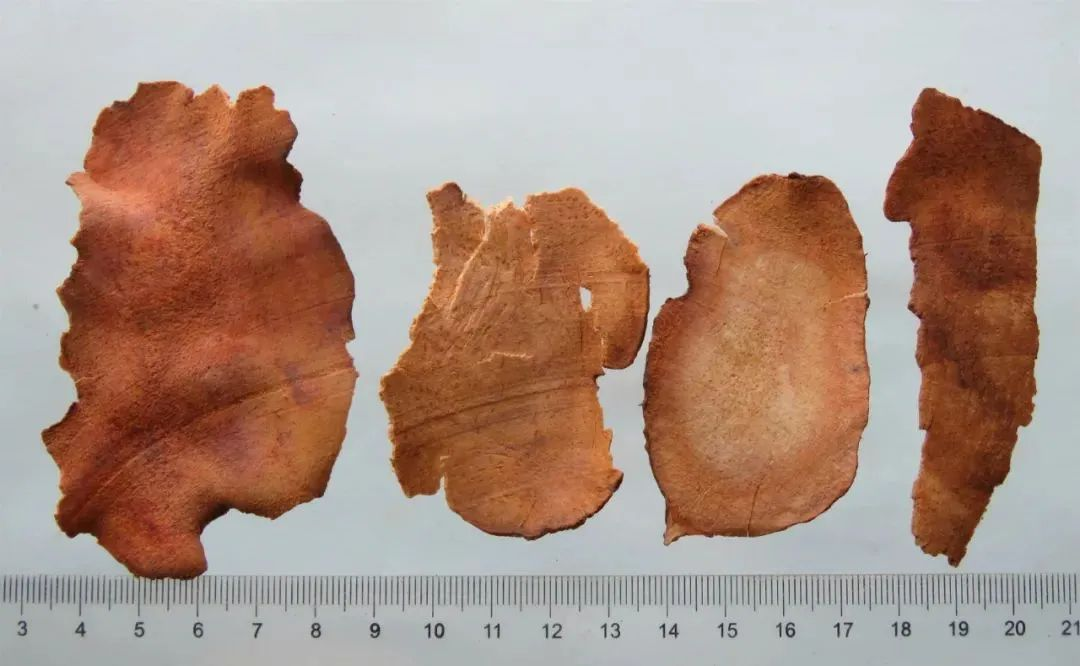
▲ Tu Fu Ling slices
It is important to note that although Tu Fu Ling and Fu Ling have similar names, they are actually two different medicinal materials with distinct functions and effects. Tu Fu Ling, the dried rhizome of the plant Guan Ye Ba Wu, has detoxifying, damp-eliminating, and joint-relieving effects, but does not strengthen the spleen. For replenishing deficiency and strengthening the spleen, Fu Ling (Yun Ling) is more suitable.
5
Fu Ling’s Effective Recipes for Strengthening the Spleen and Eliminating Dampness
In addition to being commonly used in herbal combinations, Fu Ling can also be utilized in dietary therapy. Here are several common methods for using Fu Ling in food therapy.
1. Fu Ling and Job’s Tears Soup
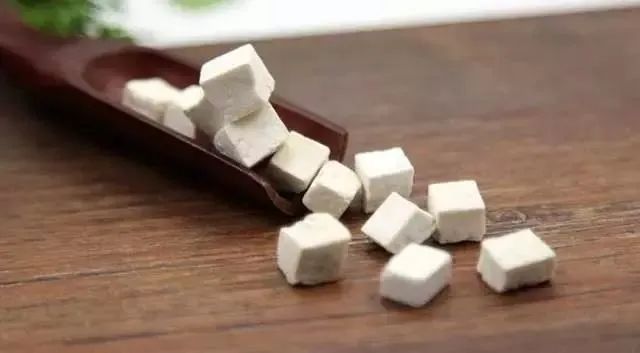
Ingredients: 500g pork ribs, 4 dried shiitake mushrooms, 20g Job’s tears, 20g Yun Ling, 15g dried Chinese yam, 10g codonopsis, and 20g five-fingered peach root.
Method: Blanch the pork ribs, soak and wash the dried shiitake mushrooms and herbs for 30 minutes, then place all ingredients in a pot and cook for 1 hour. Finally, add salt to taste.
Effect: This soup has the effects of strengthening the spleen, benefiting qi, and promoting urination and damp elimination.
● ● ● ● ● ● ●
2. Ginseng, Fu Ling, and Bai Zhu Spleen Strengthening Soup
Ingredients: 15g Fu Ling, 20g Job’s tears, 20g southern beans, 15g lotus seeds, 10g Bai Zhu, 10g codonopsis, 8 chicken feet, and 200g lean meat, with 3 honey dates.
Method: Wash and soak the herbs. Clean the chicken feet and lean meat, blanch them. Place the herbs, lean meat, and chicken feet in a stew pot, add an appropriate amount of cold water, bring to a boil, then simmer for another hour, adding salt to taste before serving.
Effect: This soup is refreshing and strengthens the spleen, with a sweet flavor, and has the effect of transforming dampness.
● ● ● ● ● ● ●
3. Fu Ling and Job’s Tears Porridge
Ingredients: 25g Fu Ling, 25g Job’s tears, 5g dried tangerine peel, and an appropriate amount of glutinous rice.
Method: Wash all ingredients, place them in a pot, and cook with an appropriate amount of water until it becomes porridge.
Effect: This porridge has the effects of strengthening the spleen, transforming dampness, and regulating qi. It is suitable for children with spleen deficiency diarrhea and difficulty urinating.
● ● ● ● ● ● ●
4. Fu Ling Cakes
Ingredients: 30g Fu Ling, 30g Job’s tears, 30g white flour, and an appropriate amount of sugar.
Method: Grind the ingredients into a fine powder, mix well, and press into cakes, then steam until cooked.
Effect: Suitable for children, it helps harmonize the spleen and stomach.
● ● ● ● ● ● ●
5. Fu Ling Buns
Ingredients: 50g Fu Ling, 1000g refined white flour, 500g pork, 15g ginger, 5g pepper, 10g sesame oil, 10g Shaoxing wine, 15g salt, 100g soy sauce, 25g green onion, and 250g bone broth.
Method: Clean the Fu Ling to remove ash and debris, soak it in water, steam until soft, slice, then heat and extract the juice by adding about 400g of water, heating three times for about 1 hour each time, combining the juices, filtering, and concentrating to 500g for use. Use the medicinal juice to knead the flour into a dough, let it rise. Mince the pork and mix with seasonings to make the filling. Roll out 20 dough skins, fill with the mixture, and steam for 15 minutes to serve as breakfast.
Effect: Calms the mind, nourishes the spirit, strengthens the spleen, eliminates dampness, transforms phlegm, and promotes urination. It treats diarrhea, edema, and insomnia caused by spleen deficiency and dampness, and is beneficial for conditions such as neurasthenia, anemia, tuberculosis, excessive phlegm, poor appetite, and rough skin.
● ● ● ● ● ● ●
6. Four Divine Soup
Ingredients: 80g fresh Chinese yam (or 30g dried), 30g Fu Ling, 30g gorgon fruit, 30 lotus seeds (with cores), 6g dried tangerine peel, and 300g pork bones (serves 3 to 4 people).
Method: 1. Wash all ingredients; 2. Chop the pork bones into small pieces and blanch; 3. Place all ingredients in a pot, add appropriate water, bring to a boil, and simmer for 1.5 hours, adding salt to taste.
Effect: This soup has effects of strengthening the spleen, nourishing the skin, and eliminating dampness.
● ● ● ● ● ● ●
7. Fu Ling Beef Bone Soup
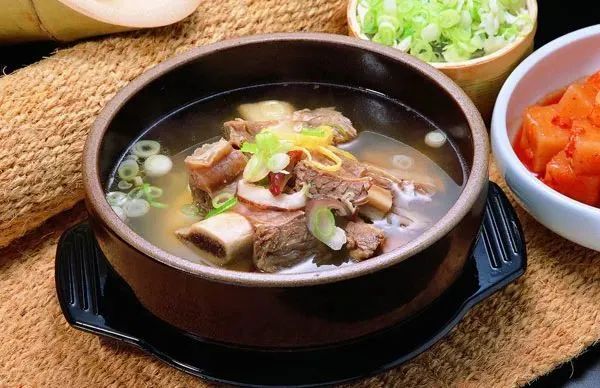
Ingredients: 250g beef bones, 50g Fu Ling, 100g Chinese yam, and appropriate amounts of ginger, green onion, salt, and monosodium glutamate.
Method: Clean and chop the beef bones, wash the Fu Ling and Chinese yam. Place in a pot with appropriate water, add beef bones, Fu Ling, Chinese yam, ginger, and green onion, and cook for 40 minutes. Add salt and monosodium glutamate to taste.
Effect: Nourishes the kidney and promotes urination. Suitable for chronic nephritis, lower limb edema, and reduced urination.
● ● ● ● ● ● ●
8. Fu Ling Fish Balls
Ingredients: 1000g fish meat (preferably from sea fish), 50g Fu Ling powder, 10g water chestnut powder, and appropriate amounts of salt, chopped green onion, minced ginger, and yellow wine, with a few slices of bamboo shoots.
Method: Mince the fish meat and place it in a bowl, add Fu Ling powder and water chestnut powder to make fish balls. Place the fish balls in a clay pot, heat until set, then add salt and bamboo shoots, and cook until done. Serve as a side dish.
Effect: Promotes urination, transforms phlegm, and enhances brain function. Suitable for those with physical weakness, shortness of breath, fatigue, difficulty urinating, and insomnia with vivid dreams.
● ● ● ● ● ● ●
9. Fu Ling Mushroom Rice
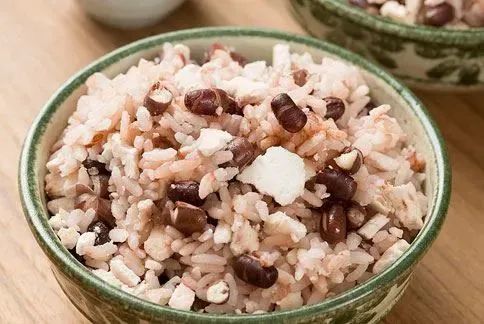
Ingredients: 10g Fu Ling, 200g white rice, and a small amount of mushrooms.
Method: Soak the Fu Ling until soft, grind into powder, and steam with mushrooms and white rice.
Effect: Calms the mind, enhances intelligence, and strengthens the spleen while stopping diarrhea. Suitable for those with palpitations, dizziness, weak stomach, and neurasthenia.
● ● ● ● ● ● ●
10. Fu Ling Pear with Bai He
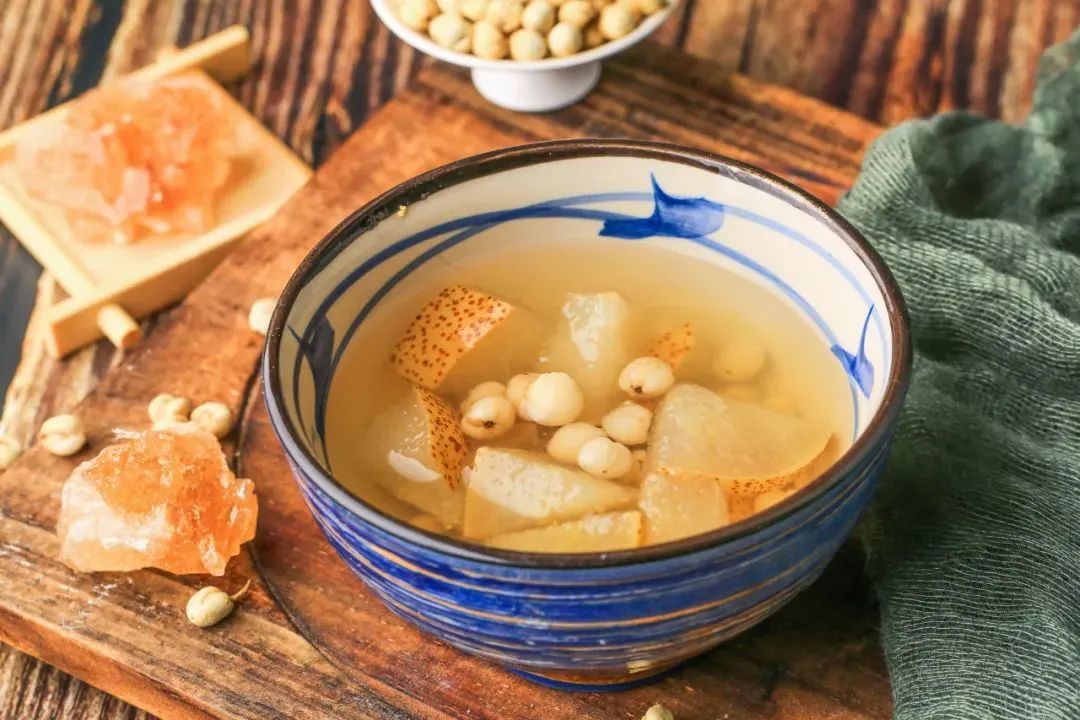
Ingredients: 15g Fu Ling, 10g Chuan Bei Mu, 1000g pear, 50g honey, and appropriate amounts of rock sugar.
Method: Clean the Fu Ling and cut into small cubes; clean the Chuan Bei Mu; wash the pear, remove the stem, and cut into cubes. Place Fu Ling and Chuan Bei Mu in a pot with appropriate water and cook over medium heat until done. Then add the pear, honey, and rock sugar, and continue cooking until the pear is soft. Serve with the pear, Fu Ling, and soup.
Effect: Clears heat, moistens the lungs, and generates fluids to stop cough. Regular consumption can also beautify the skin, combat aging, and keep the skin smooth, tender, and elastic.
● ● ● ● ● ● ●
11. Goji Berry and Fu Ling Tea
Ingredients: 10g Fu Ling, 5g goji berries, and 5g black tea.
Method: Grind the goji berries and Fu Ling into a coarse powder, add black tea, and brew with boiling water. Alternatively, boiling Fu Ling and goji berries to make a decoction and then brewing black tea yields better results. Drink twice daily as a tea substitute.
Effect: Strengthens the spleen, benefits the kidneys, and promotes urination. Suitable for chronic nephritis, reduced urination, painful urination, and urethritis.
● ● ● ● ● ● ●
Source: This content is compiled from the Xinhui Traditional Chinese Medicine Hospital, Beijing University of Chinese Medicine, Medicinal Plant Illustrated Guide, and Li Shizhen’s Compendium of Materia Medica (edited by Liu Hengru and Liu Shanyong, published by Huaxia Publishing House).
Editor: Fei Fan Jian Jiao

